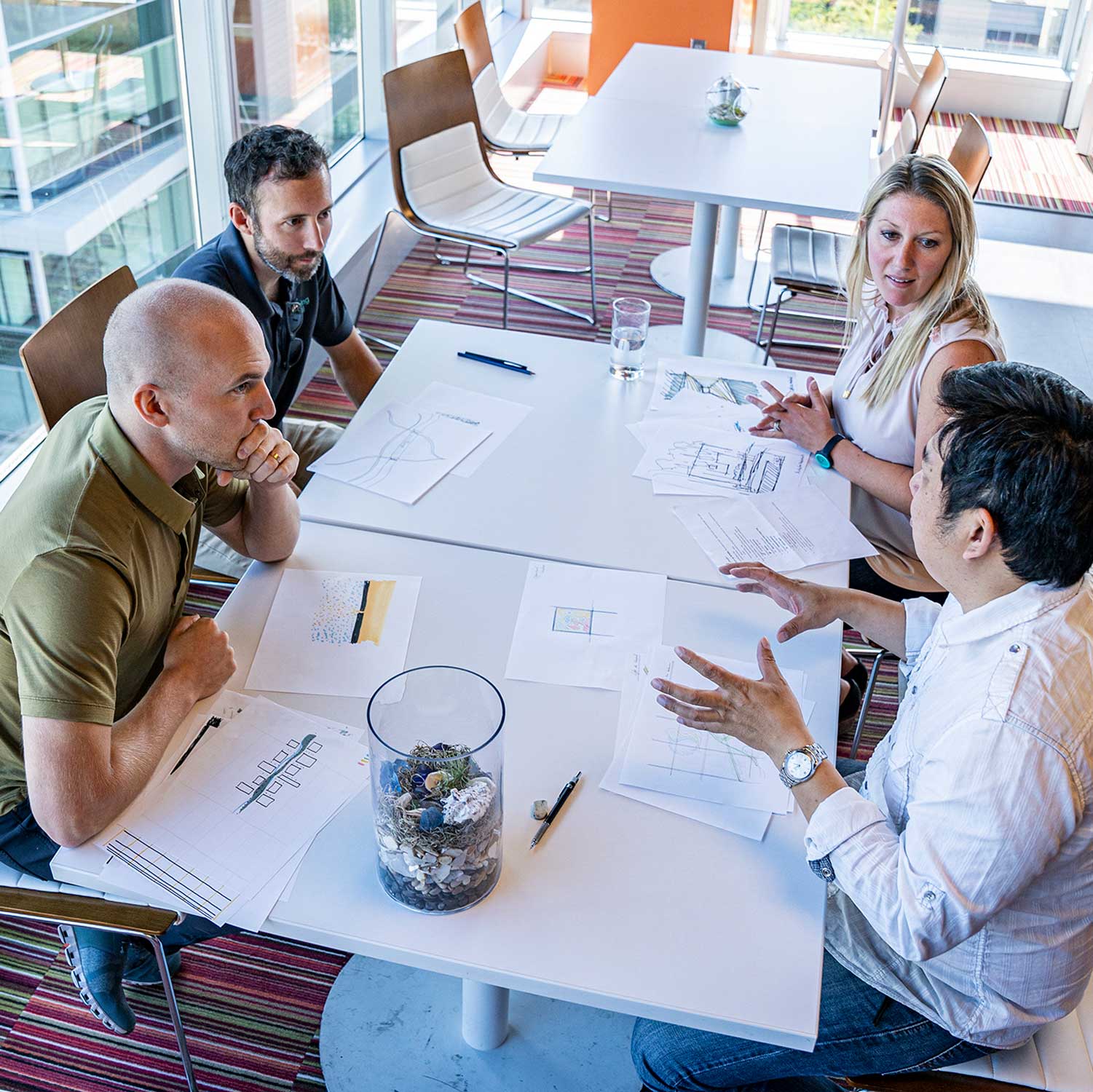“The mind is not a vessel to be filled,
but a fire to be kindled.”
–Plutarch
–Plutarch

Our firm’s mission — you’ll find it displayed in several locations on this website — is as follows: As creative pioneers, we seek to invent a better way of living. Using ingenuity, diversity, and empathy, we empower creative designers to discover imaginative, responsible, first-of-their-kind environments.
The design solutions we seek do not often jump off the page. (Though there are those rare occasions.) So the kinds of designers, coordinators, planners, and freethinkers we seek out — both as team members and clients — are hungry to learn. This can be through formal education and training, but also through iterative design, self-study, workshopping, and above all, being bold enough to always ask questions.
“There’s a lot of design professionals who set the impression that we have all the answers. And I don’t think we do. I think in our industry, it’s OK to ask the question — and not only ask the question but make it clear that we don’t know everything,” David Koel, Cushing Terrell’s Director of Design, has said. “I think it’s important for us to be creative and curious all the time.”
This is why he created Cushing Terrell’s “Constant Curiosity” program in which inexperienced designers travel to meet with, interview, and learn from design veterans. Watch the video to see what the first trip entailed.
Members of Team Cushing Terrell weigh in about
their hunger for knowledge and betterment.

You’d be amazed what we’ve learned from talking to 10-year-olds about planning and design issues. Sometimes, we need to take a step back and think like a kid; why can’t every playground also be a dog park?
Nora Bland, Planner | Denver

Every new project presents an opportunity to grow as a professional and improve our firm’s processes. We are constantly working to bridge the past and the future, using new technologies to study, preserve, and improve old buildings.
Ava Alltmont, Historic Preservation Architect | New Orleans

If a tool doesn’t serve our purposes, let’s find a better one. Heck, let’s invent a better one! That’s the Cushing Terrell way.
Travis Estvold, Digital Communications | Boise
We believe it’s not enough that we’re curious in private. What we think, the questions we ask, and the lessons we learn while seeking out new knowledge and better processes should be shared with the world!
Members of our team have twice been invited to speak at Austin’s famed knowledge-sharing haven, SXSW. In true collaborative spirit, we partnered with other experts for each. Most recently, it was a joint study of the Psychology in Architectural Design, studied and presented alongside two University of Texas-Austin professors. [This study is now available as a downloadable white paper.] Before that (though sadly the festival was canceled due to COVID), we prepared a study on New Approaches to Space Architecture, researched with members of Stellar Amenities, Blue Origin, and SEArch+.
Our team’s work is frequently featured at conferences — but among our favorite opportunities to present are the times the subjects stimulate as many questions as they do answers.

Sometimes, team members like architect/project manager Tony Houtz go straight to the source, recording podcast-like interviews with experts in various industries. These can inform our team’s knowledge base regarding facility design, but also satisfy our curiosity related to topics on which we are not experts ourselves.
Check out Tony’s first interview with veteran beer distributor Dave Irvin of Eagle Beverage:
–Zora Neale Hurston
Our team believes research is key to successful outcomes. Being equipped with the knowledge of what’s come before, what’s happening now, and what’s most likely to happen in the future is vital. This is why our projects both begin and end with research, and inform each project thereafter.
This research process includes seeking out prior documentation, interviewing end-users, engaging with community members, and traveling to experience and document spaces in person. And, to ensure our findings are not buried in private archives, we disseminate our findings — through client discussions, white papers, blog posts, media placements, speaking engagements, and more.
Research following project completion includes post-occupancy evaluations, capturing and interpretation of facility performance data, and actioning lessons learned along the way.
